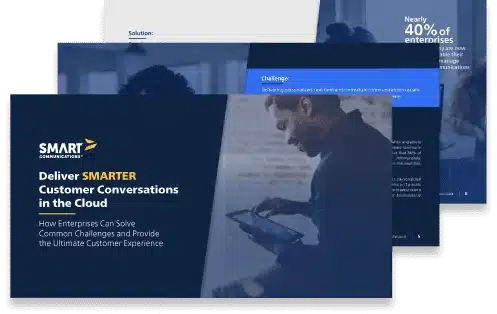How to Improve Patient Communications and Experiences: Applying Lessons from the Past to Achieve Future Success
By John Zimmerer, VP of Healthcare Marketing at Smart Communications
The concept of “patient experience” has evolved over time, and its definition has been refined by various organizations. Let’s delve into its history:
1. What Was Patient Experience Like in the 1990s?
During the 1990s, understanding patient experience gained prominence to assess the quality of care provided. However, at that time, there were no established attributes defining what contributed to a patient’s experience.
In 1995, the Consumer Assessment of Healthcare Providers and Systems (CAHPS®) program was created in the United States. It aimed to survey patients about their experiences, focusing on aspects that mattered to them rather than mere satisfaction. The CAHPS and HCAHPS surveys did not ask patients about their satisfaction; instead, they sought insights into critical aspects of their experiences.
2. Attributes of a Good Patient Experience
The Agency for Healthcare Research and Quality (AHRQ) defines patient experiences as “aspects of healthcare delivery that patients value highly when seeking and receiving care.” These aspects include:
- Timely appointments
- Easy access to information
- Good patient communication
The National Health Service (NHS) in the United Kingdom further categorized patient experience into eight dimensions:
- Respect for patient values, preferences, and needs
- Coordination and integration of care
- Information, communication, and education
- Physical comfort, including pain management
- Emotional support for clinical fears regarding the patient and their family
- Involvement of family and friends
- Transition and continuity between locations and types of care
- Access to care, including waiting times and time between admission
So, while patient experience has evolved over time, the focus has been – and remains today – on understanding and enhancing the aspects that matter most to patients during their healthcare journey. Clearly, communication is one of those aspects.
The Types of Patient Communications
There are several types of patient communications, including:
Verbal Communication
- Face-to-Face: Direct conversations between patients and healthcare providers during clinic visits.
- Phone Calls: Conversations over the phone to discuss medical concerns, appointments, or follow-ups.
- Video Calls: Virtual consultations that allow visual interaction.
Written Communication
- Emails: Used for non-urgent communication, appointment reminders, or sharing test results.
- Letters: Formal written communication for referrals, medical summaries, or follow-up instructions.
- Faxes: Still used in some healthcare settings for transmitting documents.
Electronic Communication
- Electronic Health Records (EHR): Providers document patient information electronically, facilitating communication across healthcare teams.
- Patient Portals: Online platforms where patients can access their health records, communicate with providers, and schedule appointments.
There are also non-clinical patient communications, such as those in the revenue cycle management (RCM) space, including statements and payment/collection correspondence.
While we’ve seen many technologies introduced to digitize verbal communication, and electronic communication is inherently digital, many written communications are still analog. They may start as digital documents, but they are usually not delivered that way. And email communications are often ad hoc and not centrally managed, exposing providers to compliance risks and human error.
Digitally Transform Your Patient Experience with Communications
If you’re looking for a solution to help improve your patient experience with written communications, we’ve got one!
Our SmartCOMM™ solution helps providers manage clinical and non-clinical communications, especially provider-to-patient communications. All SmartCOMM communications start from a centralized repository of templates, which provides consistency of branding and language. The SmartCOMM Draft Editor can be embedded into other solutions, including EHR and RCM systems, giving practitioners and other staff a simple, familiar, word processor-like experience. Communications can be sent via a patient’s preferred channel, whether that’s email, print and mail, or posted to a portal. Plus, all communications and edits are tracked for compliance purposes.



